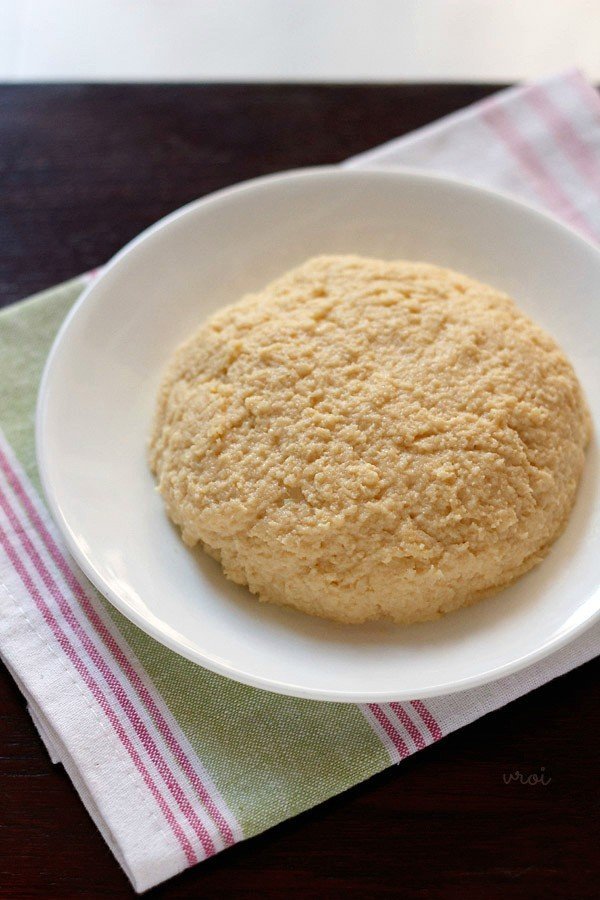Do you know there are Different between Paneer(Chenna)/Cottage cheese, Khoya(Mawa), Cheese, Butter (Cow milk)
Most of the people are confused with the above factor, thou the base is Milk but the making had made drastically change. Since 14 centuries the evolution in foods had been creativity in the human being life. In my 28 years of experience of my life in this industries had seen lots of evolutions and fusion. But, the evolution is mostly with the making, less with the base product.

Khoya/Mawa, Because it is Originated in India so it does not have specific English name, on the other hand, it is made by slowly simmering milk in a large iron Kadai which is made of Iron.
- Pour the milk into a large thick Kadai/deep pan and place it on the stove.
- Bring milk to a gentle boil first on a low to medium flame to maintain the temperature.
- Stir the milk at every interval whilst the milk is simmering.
- The milk will froth many times,. So when you see this happening, stir the milk with a spatula.
- Keep Scraping the milk solids from the sides and add to the milk.
- The milk will start reducing and will get thicken as it’s being simmered on a low flame.
- When the milk starts reducing it will resemble rabri (an Indian sweet). Do not stop, continue to simmer and stir.
- At the end when the milk has reduced, you will see bubbles bursting in the reduced milk. At this point continuously stir. If you don’t then the reduced milk will get browned or burnt. The bubbles are due to moisture in the milk.
- When you see no bubbles in the reduced milk, it’s time to switch off the flame.
- With a spatula, scrape the milk solids from the sides and add these to the bowl. Cover the bowl and let the khoya cool at room temperature. Then you can refrigerate it.
Cheese is a dairy product, derived from milk (Cow, Buffalo, Goat, Sheep, and donkey) and produced in wide ranges of flavors, textures and forms by coagulation of the milk protein casein. It comprises proteins and fat from milk, usually the milk of cows, buffalo, goats, sheep, and donkeys.

- Standardization of milk ( contain fats)
- Heat treatment
- Coagulation – Milk that has been curdled usually added vinegar that is the best option, you can also add bacteria like Lacto bulgaricus (is extracted from the leaves of the Galanthus nivalis (snowdrop flower) in Bulgaria as well. The bacterium is also grown artificially in many countries). or S.thermophilus (Streptococcus thermophilus found in fermented milk products). This converts into bacteria fermented lactose. After 45 mts to 1 hrs rennet (Crush 1/4 tablet of rennet and dissolve in 1/4 cup of cool non-chlorinated water, or add 1/4 tsp single strength liquid rennet to the water. Set your rennet mixture aside to use later) is added. This rennet (bring melting properties) extract from calf stomach but in India mostly all rennet are artificially build in a laboratory from plants which is 100% vegetarian.
- Draining of whey- The whey is removed, salt is added, and the curds are cut into smaller pieces and heated to release more whey. The additional whey is drained off, which leaves clumps of casein
- Dipping in chilled water and Pressing (creating a firm block). Fresh cheese can eat after it is prepared like mozzarella and
Swiss cheese is made with bacteria that produce carbon dioxide (CO2) when they digest lactose. The bubbles of CO2 are what create the holes in the cheese. riped cheese like cheddar cheese minimum after 6 months. The oldest piece of cheese that has been discovered is over 3,000 years old and it was well preserved in desert tombs. While this ancient cheese is not edible, the oldest edible cheese on the market today can be aged for up to 18 years.

Paneer (Chenna)/Cottage Cheese: Paneer as known in India and cottage cheese in western world, that is made by curdling milk with an acid, such as lemon juice or vinegar. It goes into the following process.
- Standardization of milk, mostly buffalo milk as it contain more fats then cow milk ( contain fats)
- Heat treatment & Coagulation (Milk that has been curdled usually by an acid such as vinegar)
- Draining of whey (Leftover water after the formation of paneer)
- Pressing (creating a firm block)
- Dipping in chilled water (To hold the paneer)
Paneer does not require any fermenting or curing. And unlike many other kinds of cheese in the world, the making of paneer does not involve Rennet, and it is therefore completely vegetarian-friendly.It is a firm, non-melting cheese that is unsalted and has a pleasantly mild flavor. Paneer cheese is made in a similar way to ricotta cheese is made.Blocks of homemade paneer can be used to make a variety of tasty dishes, from pakora to curries – and is super yummy to eat by the slice on its own!
Butter: The first step in creating butter from the uncooked milk or cream, the milk is put in a metal churning/mixing tank, in the village normally churning is done manually either in a wooden pot or metal pot. Similar to the rotation of a clothes dryer, the churn tumbles the cream. It generally takes around 1 hr to 1.1/2 half hr minutes for the first signs of butter to form, which eventually leads to the butter being separated from the buttermilk. Next, salt and any other ingredients are added to the butter and the churning starts up to ensure an even mix (you may add salt at a later stage when butter is almost done). This continuously churning process will give you end result of butter.

Differences between Butter and Margarine.Margarine is a non-dairy product made from vegetable oils that is 80 percent vegetable oil and water and designed to imitate butter, while Butter is a concentrated dairy fat produce by churning cream.

Mr. Kishor Saha
Dean- Hospitality studies
Shree L. R. Tiwari Degree College of Arts, Commerce and Science


